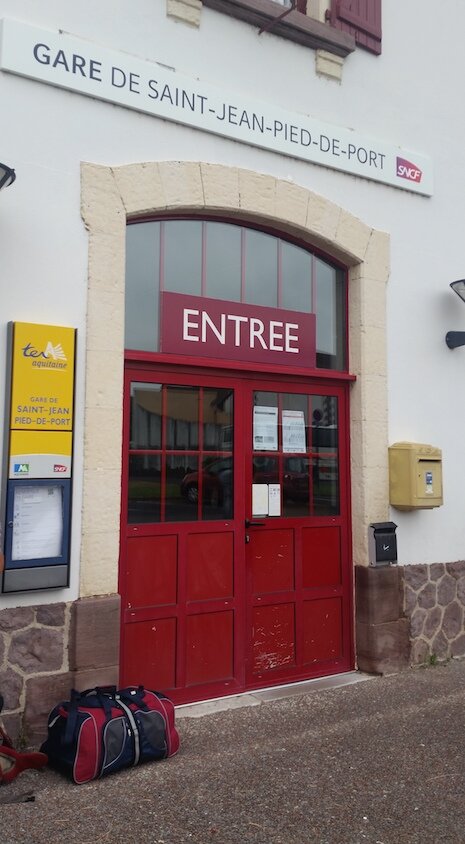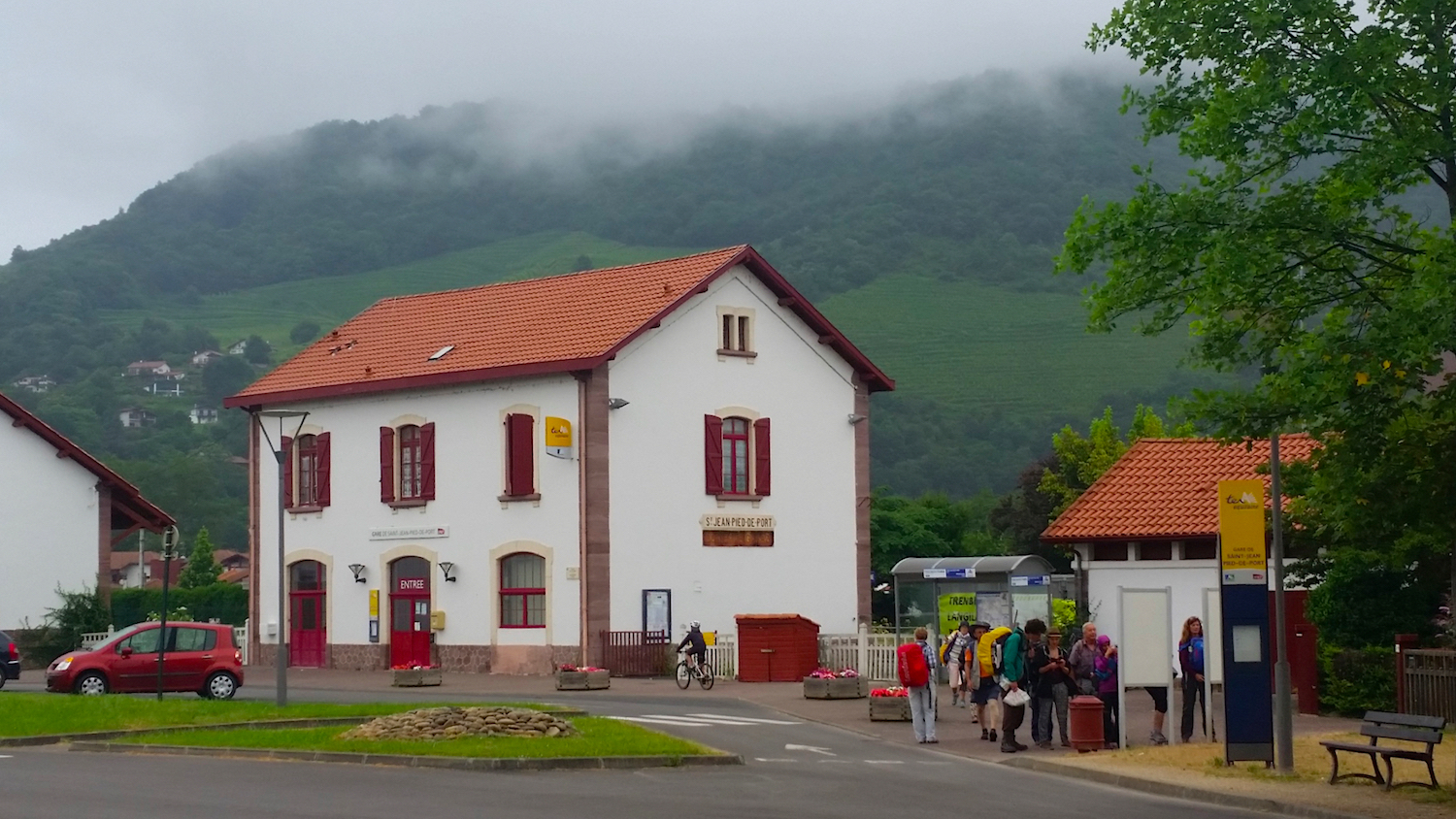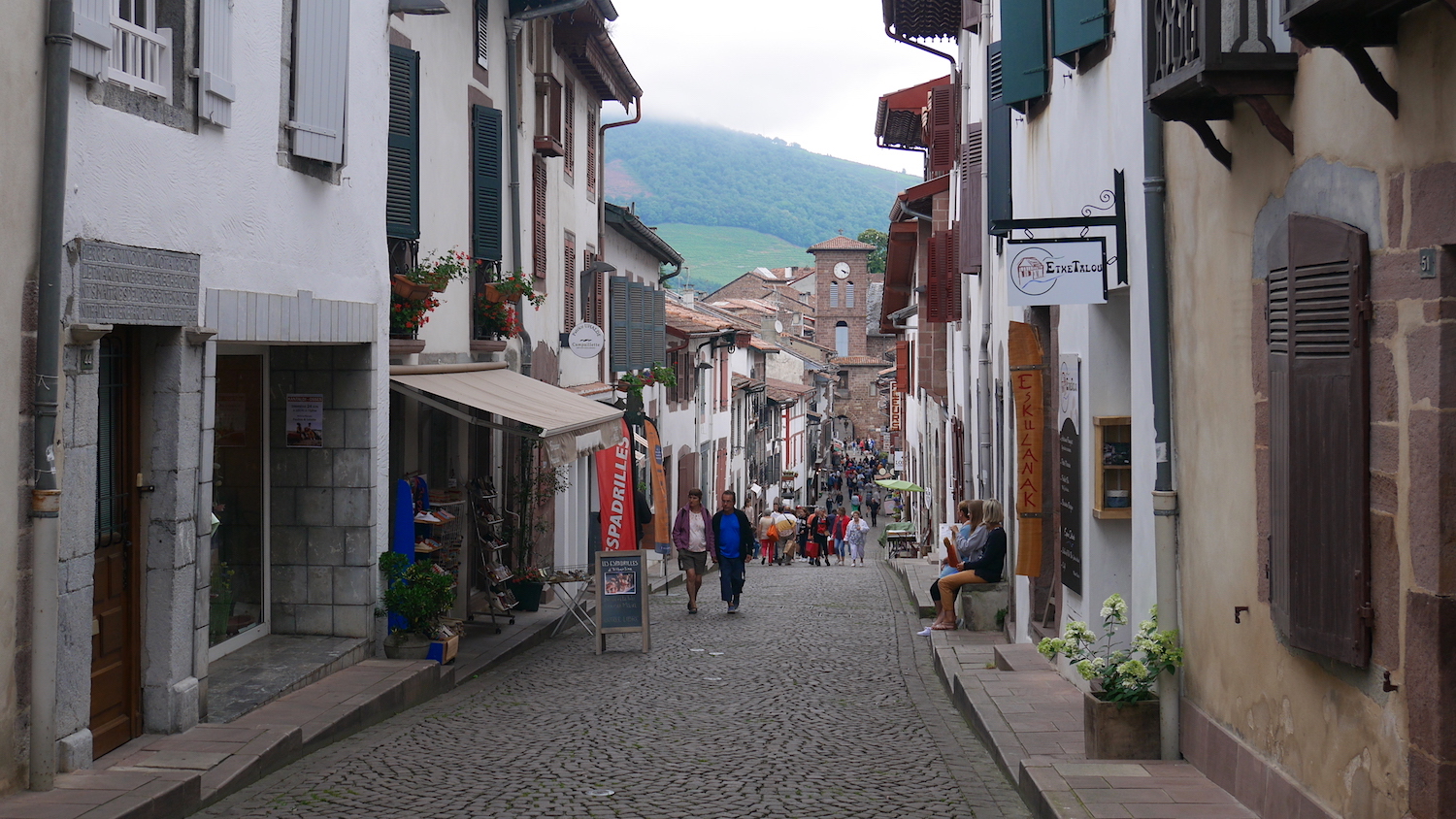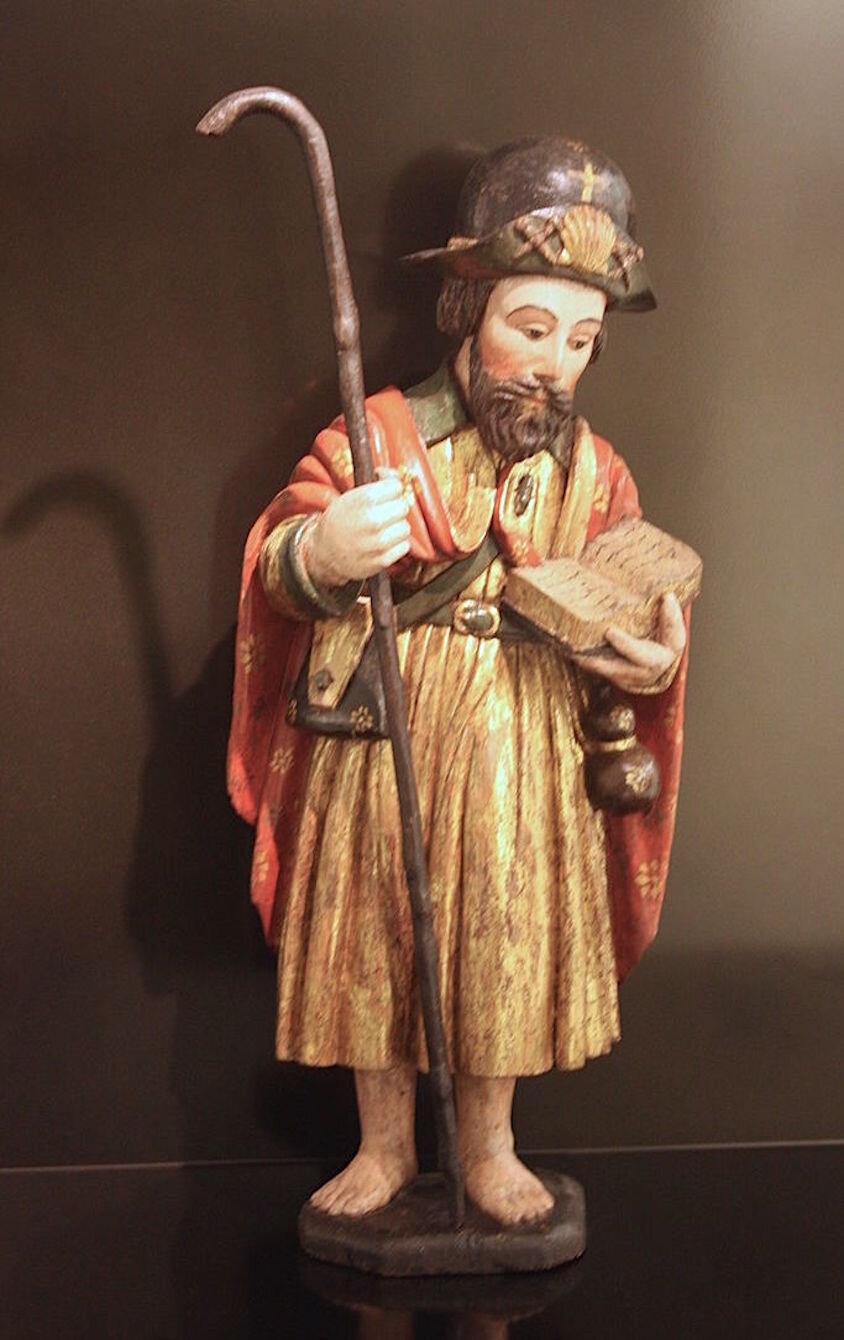porté (pɔʀt) n. [PIE *prtu].
door, gate, haven, mountain pass.
A bullet-train got us most of the way there; a bus finished the job.
We stepped off of it and joined the others on the sidewalk. Eyes, sleepy from the ride, were now wide and darting. Despite hailing from different places (evident from the different languages being whispered), the group had one thing in common. We had come to walk the Camino Francés.
Uniforms suggested stories of preparation and personality: trail shoes or boots with thick socks, high-tech shorts, custom t-shirts, hats, hankies, bangles, beads, tattoos, trekking poles, and the like. Hovering in the air was a kind of anxiousness that you feel in the locker room moments before the man sticks his head through the door and says in a breathy way: “Game-time, coach!”
Overhead, the mist draped the Pyrénées like a silky jabot.
The driver said nothing. He hopped out, ponytail swinging, and raised the bus belly doors. Bob and I found our backpacks and shouldered them.
We high-fived, grinning silly. “This is it!”
Saint-Jean-Pied-de-Port is located in the Basque Country of southwestern France. The tiny community is pressed against the River Nive at a strategic gap through the Pyrénées. This position distinguishes it from all the other Saint Johns or Johannesburgs or Ivans or San Juans of the world. This one is Saint-Jean-Pied-de-Port or “Saint John [at the] Foot of [the] Pass.” The mountain pass is, of course, the “port of the Cize” (Portus Cisere to the author of Codex Callixtinus), a strategic artery connecting France and Spain.*
The bus station at Saint-Jean-Pied-de Port.
Bob and I shot our obligatory photos of the bus station. We consulted the map. Then we followed the others-in-boots for a short walk into town. Before us was a cluster of perfectly manicured houses and buildings. Their roofs were “red and rosy, as a Frenchman.”**
It is hard to say when the original settlement of Saint-Jean-Pied-de-Port came to be. Cave art and artifacts at the nearby sites of Isturitz and Oxocelhaya suggest that human habitation in the region goes back to deep prehistory. Much later, the Romans brought their legions to the Aquitaine. The gold mines of Asturica Augusta (modern Astorga, Spain) had to be linked to the rest of the empire. The path to the gold network would be remembered by the 3rd century AD as the “Route of Antonin.”
The white stucco buildings of Saint-Jean-Pied-de-Port crowd the River Nive.
Richard I of England (of Robin Hood fame) razed the region in AD 1177 and earned the nickname “Lionheart” in the course of his campaigns. The Kings of Navarre rebuilt Saint-Jean and erected a fortified château on a hill overlooking the village. Richelieu turned that château into a citadel. The Franco-Spanish conflict dragged on and on but throughout those centuries of pain and struggle, the flow of pilgrims continued. They came from points across Europe to visit the tomb of the Apostle to find healing, hope, and forgiveness (if you missed it, see the “four streams” map in our post here).
We found the pension I had reserved for the night (clinging to a steep hill a kilometer or two out of town), settled our stuff, and returned to the village in the afternoon. Bob and I wanted to explore the place, pick up a few supplies, and stop in the Pilgrims’ Office.
The rue d’Espagne is a cobblestone artery that runs through the center of the village. On the north side of the Nive it becomes the rue de la citadelle.
In some ways, modern Saint-Jean-Pied-de-Port was less than expected. It was essentially the intersection of a road and a river. Neither were large. Both were postcard perfect, but a bit kitschy and pricy for my taste.
The Pilgrims’ Office and the Mendiguren Citadel, on the other hand, proved to be more than expected.
The line outside the door of 39 rue de la citadelle suggested the value of what was inside. Bob and I waited our turn at the Pilgrims’ Office and and then took a chair. The lady on the other side of the table answered our questions, provided advice, offered maps and other handouts, and issued warm encouragement. She validated our pilgrim credencials and issued our first stamp.
The Pilgrims’ Office was abuzz with activity.
The robust team of advisors in Saint-Jean-Pied-de-Port is equipped to handle the crowds in the most popular launching point for the Camino Francés. It is suggested that 20,000 hikers begin their journey from this office every year.***
The 17th century Mendiguren Citadel offered more than expected as well. The glacis, moat, walls, flanking bastions with arrow loops, draw bridges, and portcullis stirred the imagination. The view from the top was spectacular, and given the steep hill required to achieve it, the less-motivated crowd was whittled out.
Saint James dressed as a pilgrim. Image from here (accessed 8/3/2021).
La porte Saint-Jacques is incorporated into the fortification line of Saint-Jean-Pied-de-Port.
To top it off, we found the porté Saint-Jacques or the Gate of Saint James. It is the fenèstra of the fenster, the porté of the portal, the vindr of the window. We were real peregrinos now. We carried the credencials to prove it.
¡Buen Camino!
*Codex Calixtinus mentions Pass of Cize on several occasions. See here for an English translation of this important medieval document on the Camino.
** As Francis Miltoun described it in his Castles and Chateaux of Old Navarre (1907: 393). See an online version here.
***See the website on the Camino de Santiago here.
Join Mark and Vicki for a Mediterranean experience May 25-June 5, 2022. We'll be cruising aboard the luxurious Celebrity Infinity. See the link here for details. Onboard lectures will provide focus for the group as we visit the ports of Olympia, Santorini, Ephesus, and Athens among others. Optional add-on visits to Venice or Rome are possible on either end of the trip. Questions? Contact me at markziese@gmail.com.










